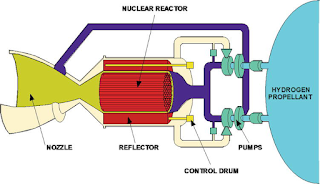Thermal (pronounced thur-muhl)
(1) Of,
relating to, or caused by heat or temperature (also thermic); of, relating to,
or of the nature of thermae.
(2) As
(both noun and adjective) thermal blanket or thermal underwear (as a noun,
always referred to in the plural (thermals) even if describing a single item),
items designed to aid in or promote the retention of body heat.
(3) In
meteorology, a
column of rising air caused by local unequal heating by the
sun of the land surface,
especially such a current when not producing a cloud; widely used in aviation
and of especial importance in gliding, a borrowing of the techniques used by
birds. The air usually rises
until it is in equilibrium with the surrounding atmosphere.
(4) In stonemasonry, a rough finish created with a
blowtorch.
1756: From the French thermal (buffon), from the New Latin thermalis, from the Ancient Greek θέρμη (thérmē) (heat; feverish heat), from the primitive Indo-European gwher (to heat, warm). The construct was therm + -al (from the Latin adjectival suffix -ālis, or the French, Middle French & Old French -el, -al; used mostly but not exclusively with word of Latin origin). The sense of "having to do with heat" is first recorded 1837; the noun meaning "rising current of relatively warm air" was first noted in 1933 in the context of aviation. Geothermal first used in 1875; hydrothermal in 1855, exothermal in 1874; athermanous in 1839, hyperthermia in 1878, isotherm in 1850, endothermic in 1869 (1947 as applied in biology) and thermometer as early as the 1597 although the most familiar (pre-digital) version with mercury encased in glass, was invented by Fahrenheit in 1714. Thermal is adjective in the singular and a noun in the singular or plural, thermally is the adverb. The most common derivations are the adjectives hyperthermal and the adverb hyperthermally but in engineering and science there’s also therm, therma, thermacogenesis, thermae, aerothermal, thermometric, thermometrical & thermaesthesia. Thermal is a noun, verb & adjective; the noun plural is thermals.
Thermal Reactive Nail Polish
Thermal reactive nail polishes change color depending on both body and ambient temperature. Nail polish is especially suitable for thermal reactivity because the extremities of the body (fingertips, toes, ears & nose) vary in temperature much more than parts closer to the core. Usefully, they work with even the thickest base and top-coats which affords additional protection for the thermal-reactive chemicals, the color-changing properties affected not at all if multiple coats are applied.
Chemically, the thermal reactivity works because the polish is infused with a leuco (“white” in Ancient Greek) dye, the word a little misleading in this context because leuco dyes have two forms: one clear, the other colored. The reversible transition between the two colors may be caused by heat (thermochromism), light (photochromism) or pH (halochromism) and in other (often industrial) applications, it’s possible irreversibly to change colors, usually from a redox reaction.
For thermal nail polish, the dye comes packaged in tiny spheres called microcapsules, each only 1-10 microns in diameter but containing three chemicals: (1) leuco dye which changes color reversibly, the color depending on the dye which, when combined with a proton or hydrogen ion, becomes colorless. (2) A weak acid which acts as a catalyst, donating the hydrogen ion. (3) A solvent which induces a color change at a desired temperature. When cool, the solvent solidifies, the hydrogen remaining stuck to the acid and thus not interacting with the colored dye. When hot, the solvent melts, the weak acid dissociates, the hydrogen ion binds to the dye, and the dye is colorless. The temperature-shift range is about 5ºF (3ºC).
Those not content with the commercially available color combinations easily can brew their own thermal reactive polish. Leuco dyes are available in many colors and come as a powder, slurry, epoxy, or water-based ink but only the powder is suitable and the transition range should hover 88ºF (31ºC) because nails are cooler than body temperature. The choice of polish color dictates the result. A white polish will produce a pastel result, a pale color will switch between the original and the combination of the leuco and the color so a mix of pink polish and a blue leuco dye yields a color shift from pink to purple.
To mix, place 1-2 small ball bearings in empty nail polish bottle and fill with polish to about half-way. Add leuco dye to achieve desired color (about ⅛ teaspoon) and, if ambient temperature is high, chill the bottle to see result. When mixing, cap bottle and gently roll it; do not shake because this will cause cavitation, the formation of air bubbles which impede the blending. If the polish is too thick, add a few drops of nail polish thinner or clear top-coat but never acetone or other nail polisher remover because these chemicals ruin the mix. Glitter or holo may be added according to taste.
When skiing or mountain climbing, thermal
underwear is usually the ideal choice for what is called the “thermal base
layer”, a combination which consists usually of a top and a pair of leggings. Outer layers of ski clothing perform better
when a thermal base layer is worn because the moisture from the body rapidly is
wicked away in a capillary action, permitting the breathable fabrics of the
outer garments more efficiently to dissipate the moisture more efficiently. It’s often thought the only purpose of thermal
underwear is to increase body temperature but it’s the symbiosis between the thermal
base layer and the outer coverings which regulate
body temperature, maintaining comfort in both colder and warmer conditions. By volume, most thermal underwear is made from
Polyester (a type of plastic called polypropylene), often augmented with Lycra
and all these garments are produced in a very tight weave which delivers good thermal
qualities and what the manufacturers call a high “breathability factor”.
Also used is fine wool which, being a natural fibre, is preferred by many and it does posses the virtues of offering both comfort and efficient thermal qualities. The choice between the types of construction is less about specific differences in thermal performance than how one’s skin reacts and sometimes this is something which can be judged only after prolonged exposure in a variety of temperatures. All types are available in both short and long (sleeves & legs) versions and because the material is so thin, the longer cuts intrude not at all upon the fit of gloves and boots and the choice is again one of personal preference although, in extreme conditions, the full-versions should always at least be packed.

















